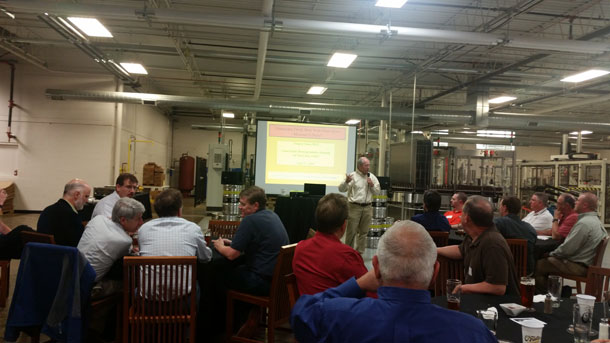Shakespeare is commonly believed to have died 400 years ago Saturday, but it seems — and I don’t think this is because I live in an insular beer world — that the official 500th anniversary of the Reinheitsgebot is getting a lot more attention. If you somehow missed the onslaught, read this story, or this story, or this one, or do a search on Twitter.
What else could there be to say? How about a sideways look at the Reinheitsgebot and how it might have affected beer in the United States?
Yesterday evening, Greg Casey pointed out how different beer in America might have been had the U.S., or at least some states, enacted Reinheitsgebot-like laws in the last decades of the nineteenth century or the first of the twentieth. Casey worked in the brewing industry for more than 30 years before retiring from MillerCoors in 2013. He is best known for his expertise in yeast. He invented the application of chromosome fingerprinting to provide the global brewing industry with its first definitive means to fingerprint production strains of yeast.

Even before Casey retired he had begun research into the political battles to define “what is beer?” that began in the final decades of the nineteenth century and continued until the beginning of Prohibition. He shared some of the information about the arguments surrounding the use of adjuncts he has accumulated during a presentation at a St. Louis Chapter of the Master Brewers Association of the Americas meeting at the O’Fallon Brewery. He is in the process of writing a book he’ll call Americans Drink Beer With Their Eyes that he hopes to see published in 2017.
Thursday he focused on what happened in Missouri and suggested, as he has in presentations to other MBAA chapters across the country, that brewers today who use ingredients beyond water, malt, hops and yeast owe a certain debt to those who fought for the the right to brew with adjuncts. Not something you think about right off.
Hypotheticals are always, well, hypothetical. So it is hard to imagine the government imposing a Reinheitsgebot-like law. However, consider that after Congress passed the Pure Food and Drug Act of 1906 the committee in charge of establishing standards for malt liquors tentatively proposed definitions that created a separate class for malt beers made without adjuncts. The proposal also included a requirement that lager beers be lagered for at least three months. (Good luck enforcing that.) Neither of those became part of the final recommendation, but it is just one of many examples Casey has.
What you might not think about when you are drinking a kumquat gose or pineapple IPA is it was relatively recently that it became acceptable to serve such beers in mixed company. Legal earlier, sure. A good example of a brewer’s craft, not so much. Fritz Maytag at Anchor Brewing and Jack McAuliffe at New Albion made as big a deal about “beer purity” in the 1970s as any anti-adjunct politicians did in the 1890s.
When Frank Prial of The New York Times visited McAuliffe in 1979, he wrote:
Jack McAuliffe boasts that his beer is a completely natural product. “We use malt, hops, water and yeast,” he said. “There are not enzymes, which the big breweries use to speed up the process of mashing and aging; there are no broad spectrum antibiotics, which they use to stop bacteria from growing, and there are no heading agents to create an artificial head. The proteins which are filtered out of most beer are what make the head. We don’t filter.”
And Maytag might as well have used the word Reinheitsgebot last year (and 50 years after he bought Anchor Brewing) in an interview in the San Francisco Chronicle:
Mind you, there was no beer in the world more traditional than ours. Pure water, good yeast, malted barley, hops. Period. No additives, no chemicals, no nothing. That was a theme we felt strong about. To make old-fashioned beer in a pure, simple way.
American brewers today are not playing by the same rules.
 Host Oliver Gray has announced
Host Oliver Gray has announced